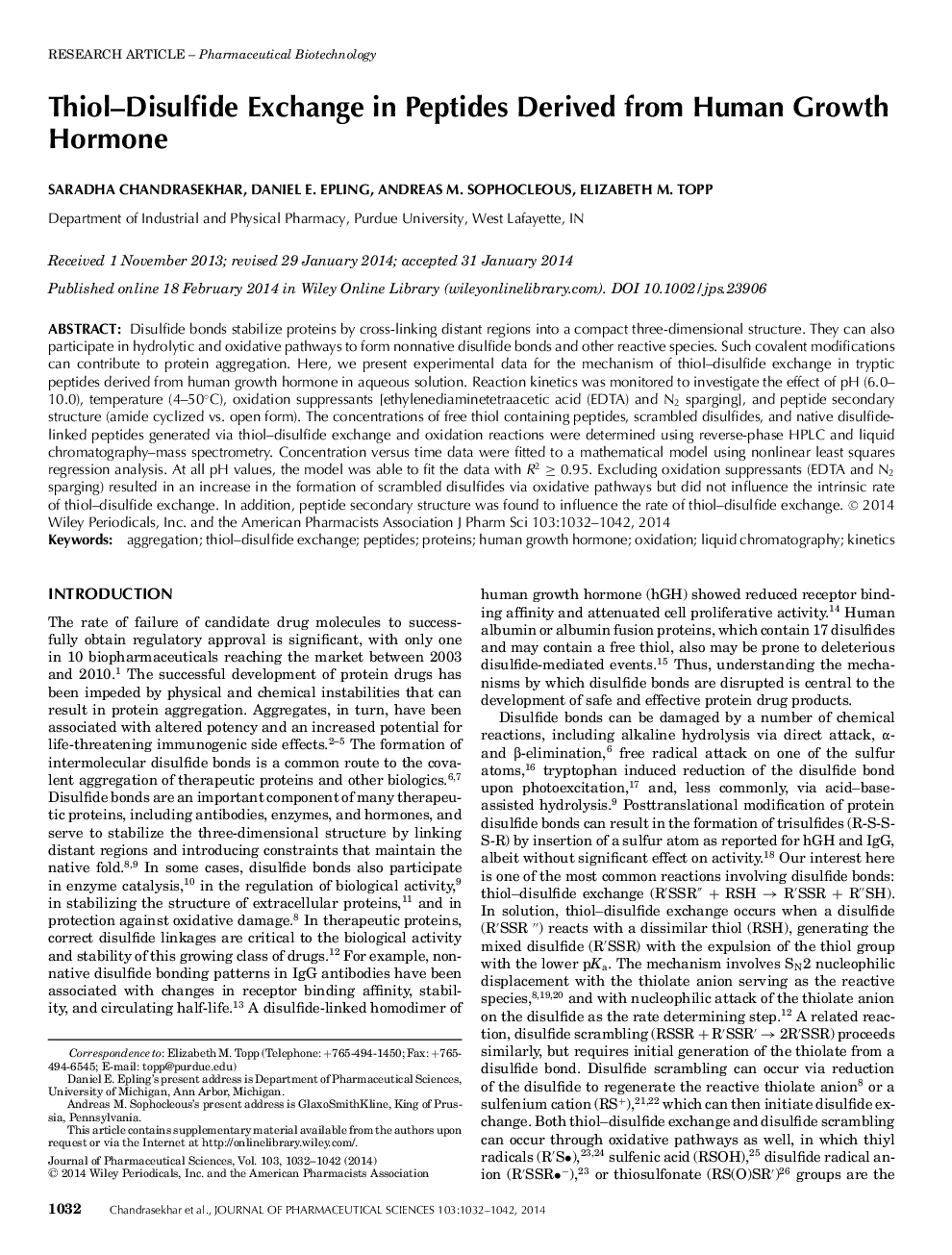| Article ID | Journal | Published Year | Pages | File Type |
|---|---|---|---|---|
| 10162375 | Journal of Pharmaceutical Sciences | 2014 | 11 Pages |
Abstract
Disulfide bonds stabilize proteins by crossâlinking distant regions into a compact threeâdimensional structure. They can also participate in hydrolytic and oxidative pathways to form nonnative disulfide bonds and other reactive species. Such covalent modifications can contribute to protein aggregation. Here, we present experimental data for the mechanism of thiol-disulfide exchange in tryptic peptides derived from human growth hormone in aqueous solution. Reaction kinetics was monitored to investigate the effect of pH (6.0-10.0), temperature (4-50°C), oxidation suppressants [ethylenediaminetetraacetic acid (EDTA) and N2 sparging], and peptide secondary structure (amide cyclized vs. open form). The concentrations of free thiol containing peptides, scrambled disulfides, and native disulfideâlinked peptides generated via thiol-disulfide exchange and oxidation reactions were determined using reverseâphase HPLC and liquid chromatography-mass spectrometry. Concentration versus time data were fitted to a mathematical model using nonlinear least squares regression analysis. At all pH values, the model was able to fit the data with R2 ⥠0.95. Excluding oxidation suppressants (EDTA and N2 sparging) resulted in an increase in the formation of scrambled disulfides via oxidative pathways but did not influence the intrinsic rate of thiol-disulfide exchange. In addition, peptide secondary structure was found to influence the rate of thiol-disulfide exchange. © 2014 Wiley Periodicals, Inc. and the American Pharmacists Association J Pharm Sci 103:1032-1042, 2014
Keywords
Related Topics
Health Sciences
Pharmacology, Toxicology and Pharmaceutical Science
Drug Discovery
Authors
Saradha Chandrasekhar, Daniel E. Epling, Andreas M. Sophocleous, Elizabeth M. Topp,
